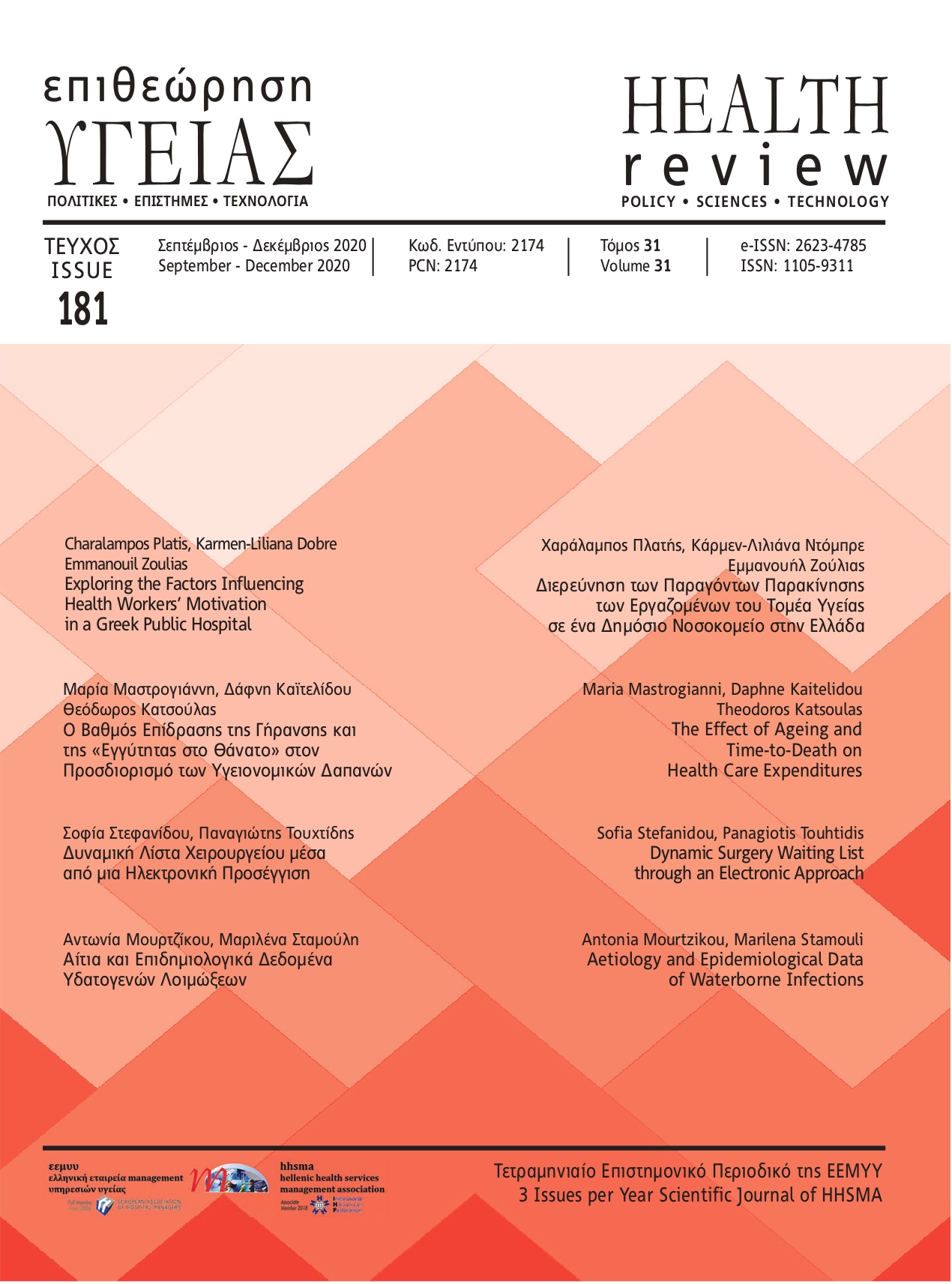
3 Issues per Year Scientific Journal of HHSMA
Editor in Chief: Georgia Oikonomopoulou MSc, PhD(c), Board Member of HHSMA, Board Member of EAHM
Latest Published Articles
Employee motivation is a complex process and crosses many disciplinary boundaries, including economics, psychology, organizational development, human resources management and sociology. The purpose of this research is to investigate attitudes of health professionals on work related issues and to the extent to which they motivate them to improve performance and increase productivity. The motivation factors for healthcare professionals, which could serve as drivers for improving their performance according to their particular individual and work characteristics, are sought. The results of the present study are in accordance with Herzberg’s theory of two factors, which suggests that motivation is strongly related to the satisfaction from the professional achievements. Motivating factor “co-workers” is related to social needs such as the sense-of-being part or belonging, support, relevance and admittance at the workplace. It is a hygiene factor as even not motivating, it satisfies the employees. An employee seems to be more affected by quality and nature of inter professional behavior and collaboration than by other parameters.
Introduction: There is widespread concern about demographic pressures of population ageing, as demographic estimates show a marked stagnation in population growth, which is at the same time accompanied by a decline of younger persons and a large increase in the proportion of older people with a remarkable rise in health care expenditures. Aim: To review the relationship between total healthcare expenditure and the determinants, ageing and time-to-death (TTD), and the degree of impact of each determinant on the determination of total expenditure in health area in the countries of Organization for Economic Co-operation and Development (OECD). Method: A systematic review of papers published up until August 2019 was conducted (the oldest meeting the criteria publication dates from 1993). Search was performed on PubMed, Medline, Scopus, ScienceDirect and OECD. The criteria for inclusion in this review were the demonstration of clear correlation between the 2 determinants and healthcare expenditure, using the key-words: ageing, time to death, closeness to death, proximity to death, healthcare expenditure, OECD. Results: Only 26 of the scientific papers retrieved met the criteria for inclusion in this review of which 15 examined how ageing influence the healthcare expenditure and 11 showed how “proximity to death” react to healthcare costs. Conclusions: The results show that the "red herring" hypothesis continues to be of great concern to researchers. The diversity of data and methodological approaches has led to many studies where demographic aging is the major determinant, but also to others where "time to death" is prevalent.
Introduction: The Surgery Waiting List establishment, three years ago, at the National Health System (NHS) was a project limited in recording the problem, that is to say at the constant flow issue of patients from rural areas to the large urban hospitals and the long waiting times for surgical procedures. The rapidly changing healthcare sector requires a continuous innovation and quality improvement of healthcare services delivery. To this direction, Cloud Computing technology adoption contributes crucially, providing access in data information at anytime and from anywhere. Moreover, enables healthcare organizations to meet up with new requirements for data exchange and to ensure the proper management of resources. Purpose: We aim to use Cloud Computing technology for shorten waiting times for surgical procedure and to propose the creation of a platform, which provides realtime access to the Surgery Waiting List and collaborates with the existing online health services in country. Material - Method: We examined the Surgery Waiting Lists of various hospitals and observed that these are presented by a static form, are not updated on a regular basis, and do not reflect the progress of the procedure. After studying the data contained in the lists, according the provisions of the Ministry of Health, we designed the proposed, dynamic Surgery Waiting List. Moqups software was used to simulate the application. The platform is developed in Cloud Computing, with accordance of law and the Regulation EU 2016/679 (GDPR). The Cloud Analyst software helped us for simulation in operation. Results: The dynamic Surgery Waiting List we propose offers the monitoring of waiting times in real time, with automatic updates. The benefits of using cloud computing services is that resources are provided on-demand and deliver faster processing of data. Conclusions: The results were encouraging and we are of the opinion that the implementation of the proposed Platform of Surgery Waiting List is possible. The advantages can be summarized in the dynamic interaction between patients and healthcare providers and in the available options that patients could have for faster treatment.
Waterborne infections are caused due to pathogenic microorganisms, mainly by bacteria, parasites and viruses. As an epidemiological criterion, we evaluate the presence in two or more individuals with similar symptoms after consumption of potable water or exposure to water that is used for relaxation purposes. Most waterborne epidemies (outbreaks) caused by microorganisms show a seasonal distribution, with a higher incidence in summer. Worldwide, the observed increase in waterborne infections has been attributed to factors such as overcrowding and urbanization, mass displacement of societies, aging of the population, increase of immunosuppressed individuals, changes in life style, as well as the climate changes. Moreover, reasons are the aging water-distribution, wastewater, and sanitation systems, and evidently the improvement of methods in recording and laboratory detection of waterborne pathogens. The effort that has taken place over the past years for more thorough laboratory testing of clinical and environmental samples taken in the framework of epidemies should be go on with undeniable interest.
